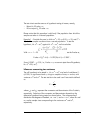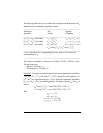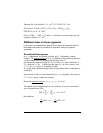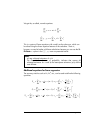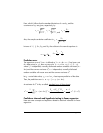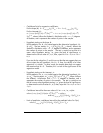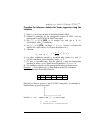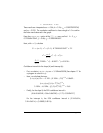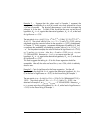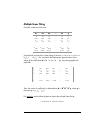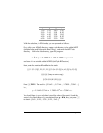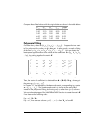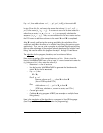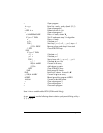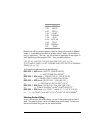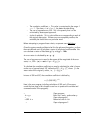
Page 18-56
Example 2 -- Suppose that the y-data used in Example 1 represent the
elongation (in hundredths of an inch) of a metal wire when subjected to a force
x (in tens of pounds). The physical phenomenon is such that we expect the
intercept, A, to be zero. To check if that should be the case, we test the null
hypothesis, H
0
: Α = 0, against the alternative hypothesis, H
1
: Α≠ 0, at the level
of significance α = 0.05.
The test statistic is t
0
= (a-0)/[(1/n)+⎯x
2
/S
xx
]
1/2
= (-0.86)/ [(1/5)+3
2
/2.5]
½
=
-0.44117. The critical value of t, for ν = n – 2 = 3, and α/2 = 0.025, can be
calculated using the numerical solver for the equation α = UTPT(γ,t) developed
in Chapter 17. In this program, γ represents the degrees of freedom (n-2), and
α represents the probability of exceeding a certain value of t, i.e., Pr[ t>t
α
] = 1
– α. For the present example, the value of the level of significance is α = 0.05,
g = 3, and t
n-2,α/2
= t
3,0.025
. Also, for γ = 3 and α = 0.025, t
n-2,α/2
= t
3,0.025
= 3.18244630528. Because t
0
> - t
n-2,α/2
, we cannot reject the null
hypothesis, H
0
: Α = 0, against the alternative hypothesis, H
1
: Α≠ 0, at the level
of significance α = 0.05.
This result suggests that taking A = 0 for this linear regression should be
acceptable. After all, the value we found for a, was –0.86, which is relatively
close to zero.
Example 3
– Test of significance for the linear regression. Test the null
hypothesis for the slope H
0
: Β = 0, against the alternative hypothesis, H
1
: Β≠
0, at the level of significance α = 0.05, for the linear fitting of Example 1.
The test statistic is t
0
= (b -Β
0
)/(s
e
/√S
xx
) = (3.24-0)/(√0.18266666667/2.5) =
18.95. The critical value of t, for ν = n – 2 = 3, and α/2 = 0.025, was
obtained in Example 2, as t
n-2,α/2
= t
3,0.025
= 3.18244630528. Because, t
0
>
t
α/2
, we must reject the null hypothesis H
1
: Β≠ 0, at the level of significance α
= 0.05, for the linear fitting of Example 1.



